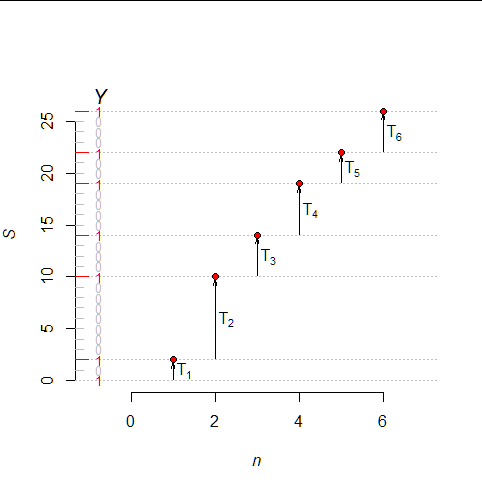Here is some context.
Let $(T_{n})_{n\geq 1}$ be an i.i.d. sequence of random variables taking values in $\{1,2,\ldots\}\cup\{\infty\}$ with common distribution $(q_{k})_{k\geq 1}$. We call discrete (undelayed) renewal process the process $(Y_{n})_{n\geq 1}$ defined through $Y_{0} = 1$ and, for any $n\geq 1$, \begin{align*} Y_{n} = \textbf{1}\{T_{1} + T_{2} + \ldots + T_{i} = n \ \text{for some} \ i\} \end{align*}
I am concerned about the following claim:
Observe that $T_{n}$ is the distance between the $(n - 1)^{\text{th}}$ and the $n^{\text{th}}$ occurrence of 1 in $(Y_{n})_{n\geq 1}$.
Could anyone help me in understanding the last assertion?

